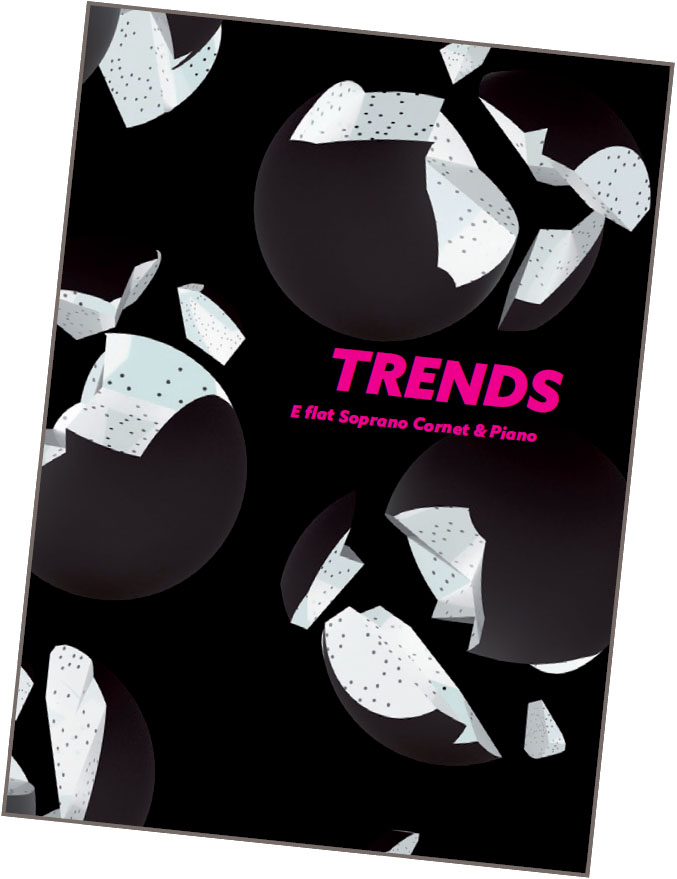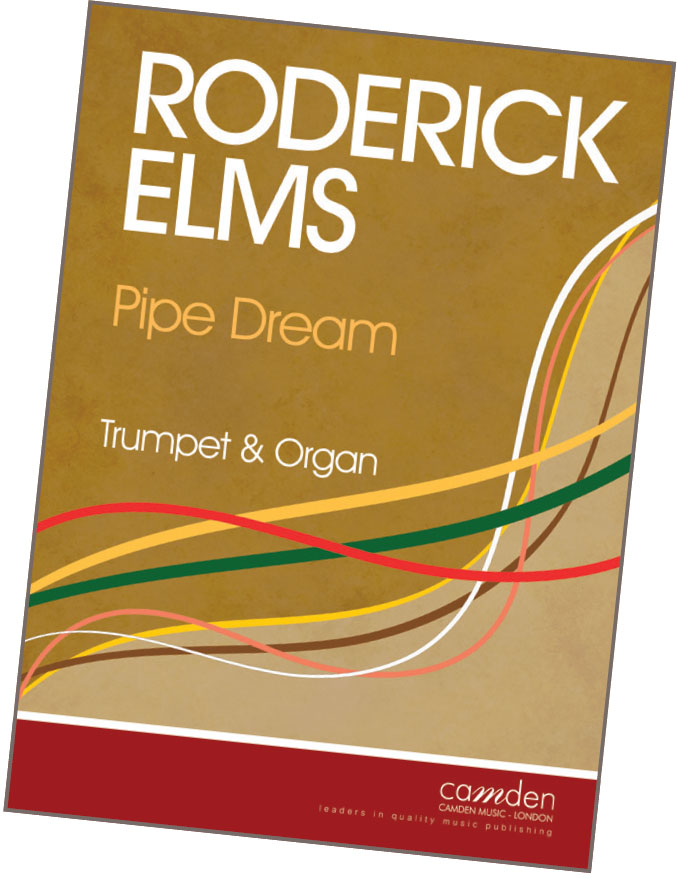
A Little Jazz Suite
Paul Austin Kelly has produced a varied, light three-movement suite starting with a bluesy Louis Armstrong or Fats Waller style with ‘Takin’ it in my Stride’. This is followed by a moody slower swing, ‘Zac's Blue Morning’, finishing with a jaunty ragtime, ‘Ezekiel's Rag’.
‘Takin’ it in my Stride’ has a roughly 12-bar blues structure. The trumpet part playing call-and-answer phrases with some piano interjections underpinned by a lazy swing left-hand stride accompaniment. The repeated triplet figures in the trumpet breaks give it a flavour of ‘Tin Roof Blues’ and it is here that trumpeters would want to reference Louis Armstrong's style. The articulation and expression marks are very detailed in the piece, but some overall phrase structure markings would have helped the developing player see where to breathe better. ‘Zac's Blue Morning’ is set lower in the range for the trumpet and works well as a contrast, but to bring this off with confidence the player would need to be at least Grade 5 for the expressive nuances and syncopations. While ‘Ezekiel's Rag’ has some challenging rhythmical moments for developing players, it is set helpfully in the key of C major to offset this.
The publication has some strengths but the range of the pieces (including a top A) dictates that the player would need to be at least Grade 6 standard. I wonder whether the jazz elements are just slightly contrived and would not necessarily challenge a player of this standard.

Trends
This piece is set for an instrument rarely seen outside of the brass band world – the E♭ soprano cornet. The piece could be played on an E♭trumpet, although the whimsical character suits the E♭ cornet's ‘sop’ vibrato better. In a brass band there is often only one E♭ cornet, so repertoire is like gold dust. Normally the instrument only attracts ‘hand-me-downs’ from its bigger counterpart the cornet in B♭ or transcriptions from other instruments. E♭ cornet players in a brass band are the high flyers; they get to play the highest notes and often have to be very adept in their playing. They are also used to having some high-pressure solo passages within a brass band arrangement. ‘Trends’ sits well in the register for a Grade 6 and above player and, as the Trinity exam syllabus for this instrument only starts at Grade 6, John Dutton has pitched his piece perfectly for future inclusion. Both the piano accompaniment and solo cornet parts are clearly marked in expressive detail and articulation; the cornet player is given clear indications over slurred, tongued notes and accents where necessary. The piece demonstrates the instrument's strengths, and developing stars will enjoy playing it.
The publication has an overall professional feel in the layout and the piano part reads with clarity. However, as it is in E♭ at con spirito tempo, an accompanist of some skill and musicality would need to be sought for concert performance. The fast waltz tempo has a nostalgic quality and one could easily imagine it as a filmic score or signature tune. There are quirky moments of humour and the piece evokes an Edwardian parlour concert setting.

Pipe Dream
This is a tour de force for trumpet and organ. It's dedicated to two talented musicians, Ellie Lovegrove and Richard Moore, and had its first performance in November 2018. Set in contemporary style with melodic lines that are eminently playable throughout, it explores many different moods. From the declamatory opening through to the sultry tango, and a reflective jazz-like middle section with a romp preceding the showy finale, this piece exudes class and would be ideal for diploma-or conservatoire-standard performer.
Time signature changes abound in the piece but surprisingly these do not feel awkward. As long as the players fully understand the quaver subdivision in changing from 5/8 back to 4/4 and similarly from 7/8 to 4/4, they should both survive the challenge. The 3/8, 2/8, 3/8 section flows well, maybe with some hints of Leonard Bernstein in the dancelike quality.
Trumpet players are usually only introduced to a trumpet in C after Grade 8, confirming that the composer intends the piece for serious study players of very high standard. There is no optional trumpet B part in this publication. That subtle brightness of the trumpet in C when compared with the B♭ adds to the joy of this piece.
The strength of the trumpet part is that it feels singable and usable throughout and its character is clearly presented at all times, from the quasi-recitativo opening to the cup-muted middle section with its attendant growls and glissando. Elms has also shown great skill in using the organ as a means to set the changes in mood between sections in the piece. This also has the added bonus of giving the trumpet player those vital bars of rest needed to manage the stamina of playing a six-and-a-half-minute piece. It goes without saying that an accomplished organist [maybe someone from Blue Coat School – see page 46] would be needed to bring out the finer points of registration and to provide an ensemble for the trumpeter. Two likeminded players of similar ability would have to rehearse intensively to give the piece its full impact, and it really isn't a wedding voluntary that can be thrown together at the last minute (although it would sound great in a wedding setting). It's a performance piece fully deserving of an attentive audience to enjoy its exultant fanfare. I could imagine that the piece would fit perfectly into a student's final presentation concert for graduation, and the fact that it is scored for organ accompaniment would make a welcome texture change from pieces for trumpet and piano. It would make a fantastic flourish to the end of any recital and bring real joy to the audience and performers alike.




